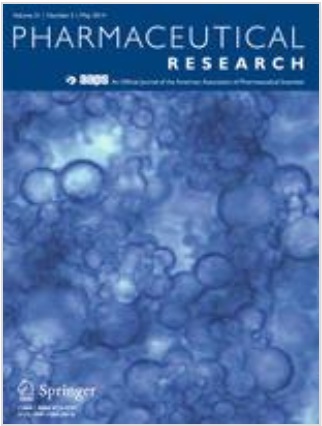Purpose
To demonstrate a very effective and easy way of stabilization of amorphous indomethacin (IMC) by preparing binary mixtures with octaacetylmaltose (acMAL). In order to understand the origin of increased stability of amorphous system inter- and intramolecular interactions between IMC and acMAL were studied.
Methods
The amorphous IMC, acMAL and binary mixtures (IMC–acMAL) with different weight ratios were analyzed by using Dielectric Spectroscopy (DS), Differential Scanning Calorimetry (DSC), Raman Spectroscopy, X-ray Diffraction (XRD), Infrared Spectroscopy (FTIR) and Quantitative Structure–Activity Relationship (QSAR).
Results
Our studies have revealed that indomethacin mixed with acetylated saccharide forms homogeneous mixture. Interestingly, even a small amount of modified maltose prevents from recrystallization of amorphous indomethacin. FTIR measurements and QSAR calculations have shown that octaacetylmaltose significantly affects the concentration of indomethacin dimers. Moreover, with increasing the amount of acMAL in the amorphous solid dispersion molecular interactions between matrix and API become more dominant than IMC-IMC ones. Structural investigations with the use of X-ray diffraction technique have demonstrated that binary mixture of indomethacin with acMAL does not recrystallize upon storage at room temperature for more than 1.5 year. Finally, it was shown that acMAL can be used to improve solubility of IMC.
Conclusions
Acetylated derivative of maltose might be very effective agent to improve physical stability of amorphous indomethacin as well as to enhance its solubility. Intermolecular interactions between modified carbohydrate and IMC are likely to be responsible for increased stability effect in the glassy state.
